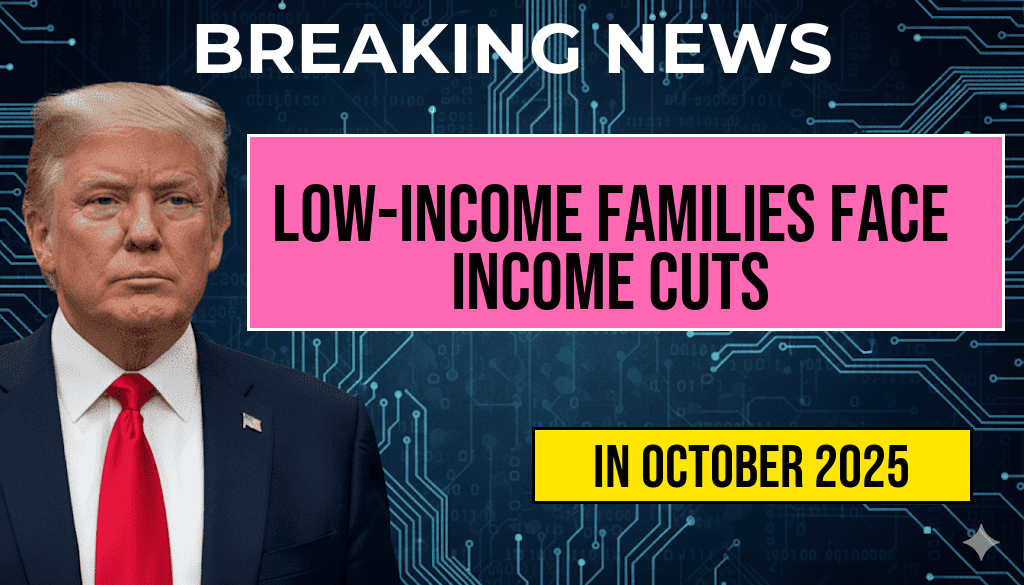Low-income families across the United States are facing significant financial challenges following recent policy adjustments that could lead to income reductions of up to $1,650 annually per household. The changes, enacted by federal and state agencies to tighten eligibility criteria for various assistance programs, aim to improve fiscal responsibility but risk placing additional economic strain on vulnerable populations. Families already struggling to meet basic needs are now contending with the possibility of diminished support, which could impact access to housing, healthcare, and nutrition. Experts warn that these reductions may deepen existing inequalities unless mitigated by targeted support measures. The policy shifts come amid broader debates over government spending priorities and the effectiveness of social safety nets in addressing systemic poverty.
Details of the Policy Changes and Impacted Assistance Programs
Scope of the Reductions
- Eligibility thresholds for income-based assistance programs have been lowered or tightened, reducing the number of families qualifying for benefits.
- Projected annual income reductions range from $500 to $1,650 per household, depending on family size and current income levels.
- The reductions primarily affect programs such as SNAP (Supplemental Nutrition Assistance Program), Medicaid expansions, and housing subsidies.
Mechanisms Behind the Policy Changes
The new policies include stricter income verification processes, revised asset limit calculations, and tighter work requirement enforcement. These measures are intended to ensure that aid reaches those most in need but have raised concerns about unintended consequences for low-income families.
Families Facing the Most Significant Challenges
Economic Strain on Vulnerable Populations
Data indicates that households earning just above the previous eligibility thresholds will experience the most substantial cuts. For example, families with annual incomes of around $15,000 to $20,000 could see reductions equivalent to nearly 10% of their total income, translating into tighter budgets for essentials like food, rent, and healthcare.
Case Study: A Typical Family Situation
| Family Size | Previous Annual Income | Projected Income Post-Policy | Estimated Reduction |
|---|---|---|---|
| 4 members | $18,000 | $16,350 | $1,650 |
| 3 members | $14,500 | $13,200 | $1,300 |
Broader Economic and Social Implications
Potential for Increased Poverty and Homelessness
Analysts warn that these reductions could push more families into poverty, with some already on the brink experiencing difficulty maintaining stable housing. The National Low Income Housing Coalition reports that even modest income decreases can result in eviction or housing insecurity for vulnerable households.
Health and Nutrition Concerns
Decreased eligibility for nutritional assistance may force families to cut back on food quality and quantity, leading to adverse health outcomes, especially among children and elderly members. The American Academy of Pediatrics emphasizes the importance of stable nutrition in early childhood development, underscoring the potential long-term impacts of policy-induced income reductions.
Responses from Advocacy Groups and Policymakers
Opposition from Social Welfare Advocates
- Organizations such as the Center on Budget and Policy Priorities argue that the policy changes undermine efforts to reduce poverty.
- Advocates are calling for targeted support initiatives to offset the impact of these reductions, including increased minimum benefits and expanded eligibility thresholds.
Government Justifications and Rationale
Proponents of the policy adjustments contend that they promote fiscal responsibility and prevent dependency on government aid. They emphasize that reforms are designed to focus resources on those with the greatest need and to ensure program integrity.
Looking Ahead: Policy Adjustments and Support Strategies
Potential for Policy Revisions
Some lawmakers are advocating for temporary exemptions or supplementary assistance programs to cushion the blow for the most affected families. Discussions around increasing outreach and enhancing community-based support are also gaining momentum.
Resources for Affected Families
- Families facing reductions are encouraged to contact local social service agencies for guidance and support options.
- Additional information is available through official government portals, such as USDA SNAP Program and Medicaid.
As policymakers navigate balancing fiscal responsibility with social support, the coming months will reveal how these adjustments influence the economic stability of low-income households nationwide. Continued monitoring and community engagement will be vital in mitigating adverse outcomes and ensuring that assistance programs effectively serve those in need.
Frequently Asked Questions
What are the main changes in the new policy affecting low-income families?
The new policy introduces income reductions of up to $1,650 for low-income families, impacting their overall financial support and benefits.
Which families are most affected by these income reductions?
Low-income families, particularly those receiving government assistance or benefits, are most affected by the policy changes that result in income reductions.
When do these policy changes take effect?
The income reductions are set to take effect starting from the upcoming fiscal year, with details on implementation dates provided by the relevant authorities.
How might these reductions impact the daily lives of affected families?
The reductions could lead to financial strain on low-income families, potentially affecting their ability to cover essential expenses such as housing, food, and healthcare.
Are there any programs available to help families offset these income reductions?
Yes, assistive programs and support services are available to help low-income families mitigate the impacts of the income reductions. Families are encouraged to explore options through local social services and government resources.






